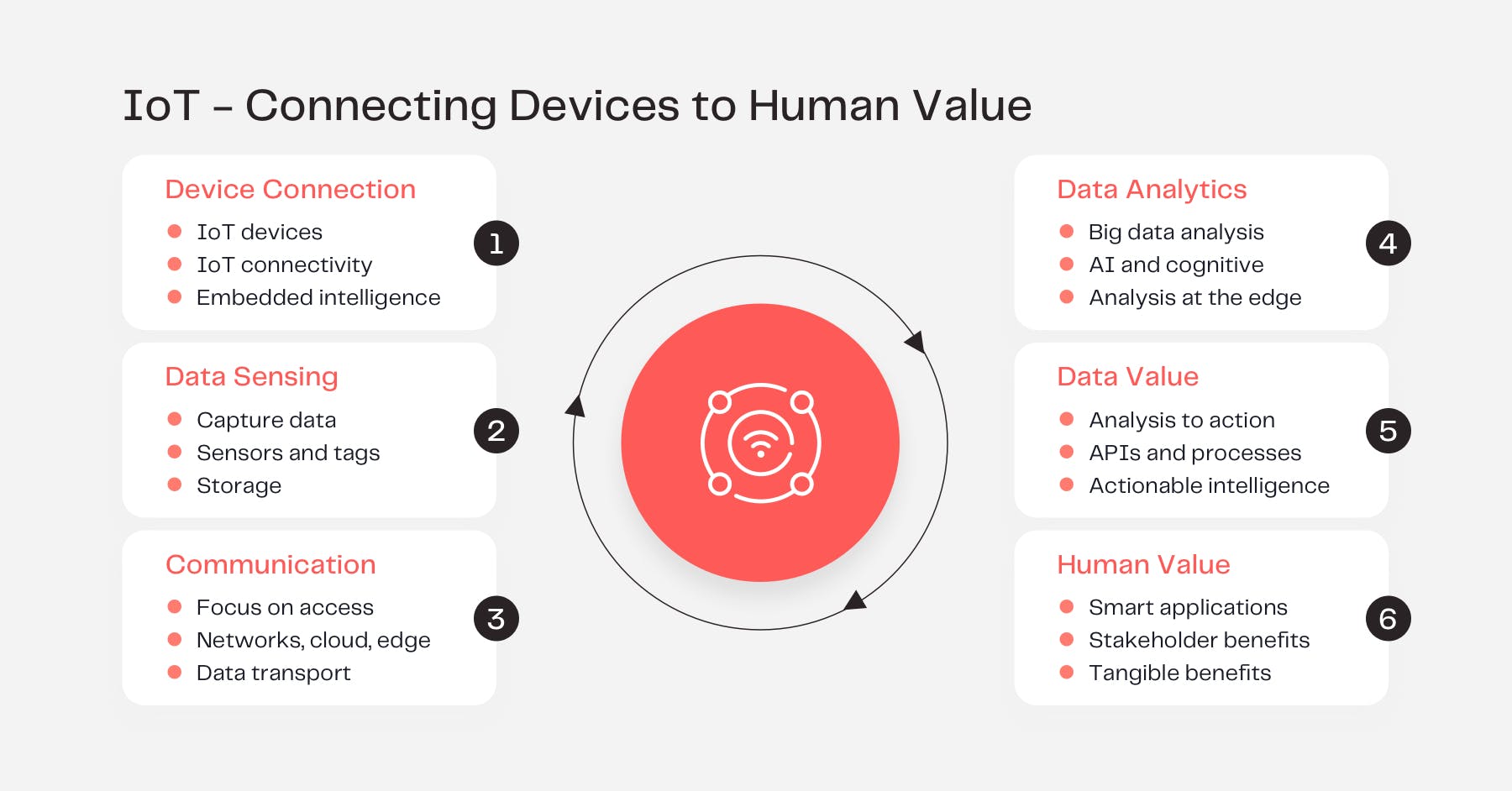Edge Computing For A New Hyperconnected Business Infrastructure

Unlocking the Value of IoT
The real value of IoT lies in its data. By 2025, forecasts suggest that 75 billion devices will be connected to the internet, and roughly 79.4 zettabytes (ZBs) of data volume will be generated worldwide. To put that into perspective, one zettabyte is equal to one trillion gigabytes. If we had to imagine each gigabyte as one brick in a zettabyte, we would be able to build 258 Great Walls of China (made of 3,873,000,000 bricks).
It comes as no surprise that companies are becoming increasingly overwhelmed by the vast amounts of available data. Many companies may be data-rich, but knowledge poor. To avoid information overload and instead gain true business value, data generated by connected “things” need to be analyzed. Through this analysis, business processes can be optimized, costs reduced, decision-making improved, and new revenue streams realized.

Mass Data: Core Business Challenges
1. Acquiring a complete overview of all organizational operations
The IoT ecosystem presents a complex network of interconnected sensors and devices with different technical features and protocols. Challenges arise when companies harvest data from multiple sources and need to transform it into a single format in order to extract actionable insights from it. A vast majority of today’s IoT platforms rely on legacy devices and outdated IT systems, which need to be integrated into the digital world in order to provide a holistic view of business activities.
2. Real-time results
Latency occurs when the distance between data centers and their end destination is too great. This creates a delay when processing and analyzing data. Latency increases by about one millisecond for every 60 miles. For businesses that rely on data insights from IoT, latency can cause significant issues since it prevents decisions from being made in real-time. In some cases, the need for instantaneous feedback is highly critical such as if we think about monitoring a component in a factory for signs of overheating which if left unnoticed may cause harm to either worker, equipment, or the environment.
3. Increasing transmission costs
Large amounts of data require more resources to transport it from the cloud to data centers, resulting in increased bandwidth costs. As the size of the IoT market grows exponentially, data generation also increases. The cost of transferring large amounts of data to the cloud to be analyzed is a significant deterrent for many organizations.
4. Sensitive data
Data collected by smart IoT devices may contain sensitive organizational or personal data. Migrating this data off-site and to the cloud raises security and privacy concerns as data is often considered less secure while in transit. When data is taken off-site, you no longer have control over it. For many companies, especially those dealing with critical information, this is too big of a risk to take, and sharing data across the network for analysis becomes infeasible.
Edge Computing: Shaping the Future of Data
The concept of edge computing comes into play as a solution for companies looking to overcome the challenges associated with data gathering, data aggregation, and data processing. Instead of sending the data through the network to a centralized data center, the processing and analysis are done at the edge of a network.

Edge computing connects legacy equipment with modern IoT platforms. Through sensors attached to legacy systems, edge computing devices can capture data and translate out-of-date machine protocols into a language that modern IoT devices can understand. Gathering data from legacy systems is an important step in gaining a holistic view of operations and delivering true data-based insights. Businesses that fail to implement IoT across the board are missing out on opportunities to optimize operations, provide better user experiences, or create new services.
By keeping the data at the edge of the network, much closer to the data source, transportation time, and latency are significantly reduced. This means that data can be accessed and analyzed in real-time—a compelling driver for many organizations that need to react quickly. Edge computing also reduces bandwidth costs as the processing of information is performed at the source, reducing data traffic to centralized data centers.
Processing sensitive and critical data locally rather than sending it directly to a central data center creates an additional layer of security for organizations and ensures only a select amount of Non-PII (non-personally identifiable information) is transmitted to the cloud. This opens up doors for many industries such as healthcare to access data and insights that were perhaps too sensitive to process and share previously.
Gartner predicts that by 2025, three-quarters of enterprise-generated data will be created and processed at the edge – outside a traditional centralized data center or cloud.
As we move towards a more hyperconnected world with interconnected systems, devices, and machines, the need for an infrastructure that can handle the expanding size, speed, variety, and distribution of data in the IoT ecosystem in a secure and efficient way becomes ever more pressing.
Edge computing can alleviate some of the limitations imposed by the traditional cloud architecture by pushing data processing closer to the edge of the network, resulting in reduced data transportation costs and latency.
By embracing edge computing, many organizations across various industries such as healthcare and manufacturing will be able to unlock better insights that will drive optimizations and help deliver a competitive edge.




